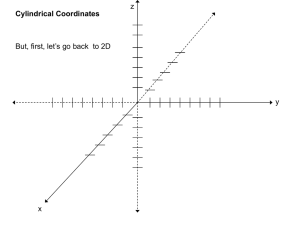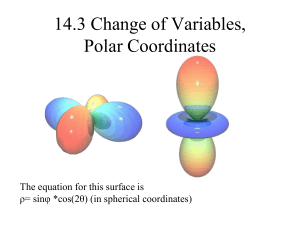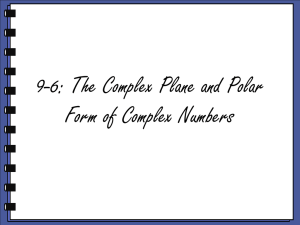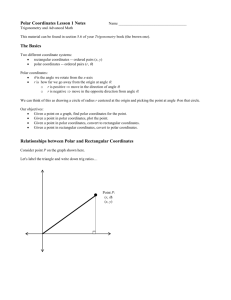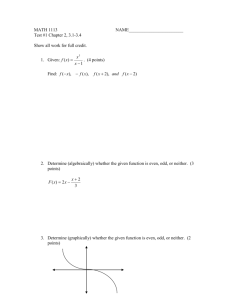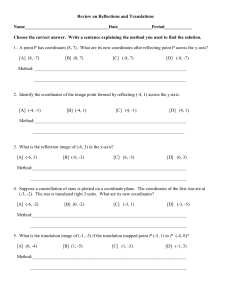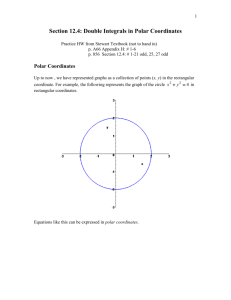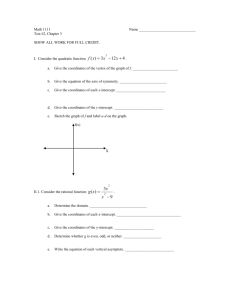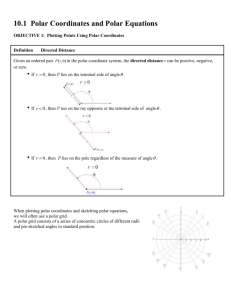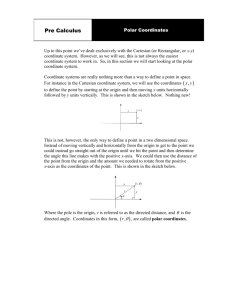Lecture Notes for Section 9.4
advertisement
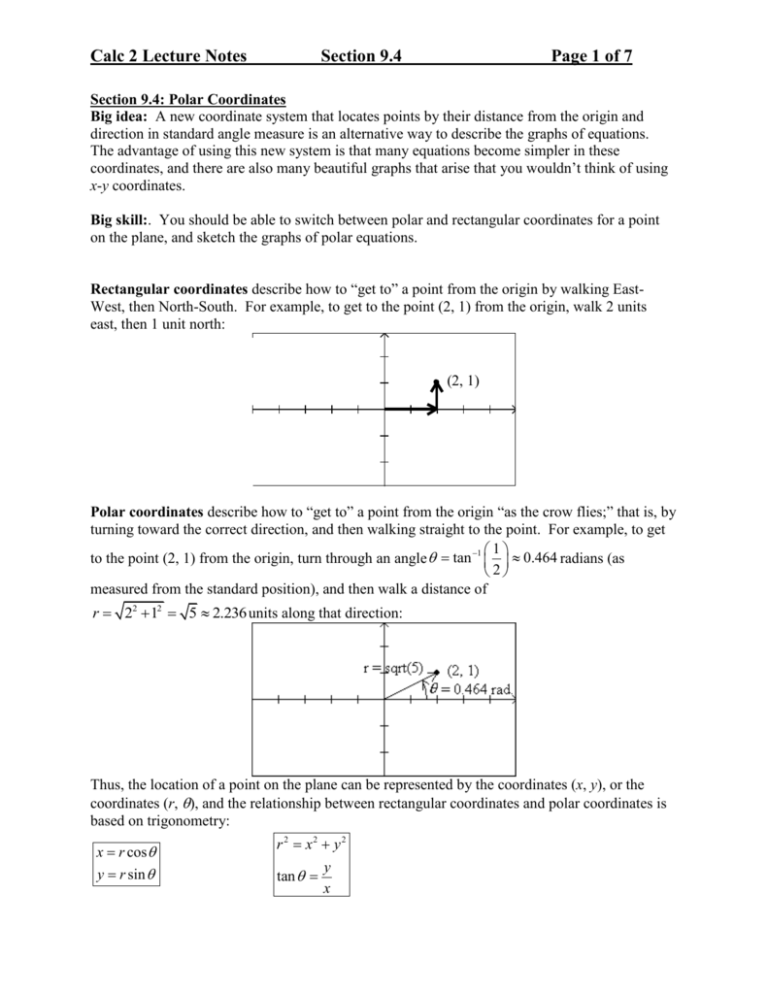
Calc 2 Lecture Notes Section 9.4 Page 1 of 7 Section 9.4: Polar Coordinates Big idea: A new coordinate system that locates points by their distance from the origin and direction in standard angle measure is an alternative way to describe the graphs of equations. The advantage of using this new system is that many equations become simpler in these coordinates, and there are also many beautiful graphs that arise that you wouldn’t think of using x-y coordinates. Big skill:. You should be able to switch between polar and rectangular coordinates for a point on the plane, and sketch the graphs of polar equations. Rectangular coordinates describe how to “get to” a point from the origin by walking EastWest, then North-South. For example, to get to the point (2, 1) from the origin, walk 2 units east, then 1 unit north: (2, 1) Polar coordinates describe how to “get to” a point from the origin “as the crow flies;” that is, by turning toward the correct direction, and then walking straight to the point. For example, to get 1 to the point (2, 1) from the origin, turn through an angle tan 1 0.464 radians (as 2 measured from the standard position), and then walk a distance of r 22 12 5 2.236 units along that direction: Thus, the location of a point on the plane can be represented by the coordinates (x, y), or the coordinates (r, ), and the relationship between rectangular coordinates and polar coordinates is based on trigonometry: x r cos y r sin r 2 x2 y 2 y tan x Calc 2 Lecture Notes Section 9.4 Page 2 of 7 Converting from polar coordinates to rectangular coordinates: x r cos Plug into the equations y r sin 5 Practice: Plot and find rectangular coordinates for the polar points 2, 6 15 1, , and 2,1.5 . 4 , 2 1.5, 3 , y x Converting from rectangular coordinates to polar coordinates: r 2 x2 y 2 Plug into the equations , then solve for r and . y tan x Keep in mind that r could be positive or negative. Keep in mind that is only defined to within multiples of 2. Keep in mind that since the domain of the arctangent function is , , you have to 2 2 work a little harder to get the correct angle for when is in quadrants II or III by either: o looking at the graph and using reference angles y o using the simple computer science trick: tan 1 when x < 0. x Calc 2 Lecture Notes Section 9.4 Page 3 of 7 Practice: Find the polar coordinates of the rectangular points (3, 3), (-2, 1), (-1, -2), and (2, -2). y x Calc 2 Lecture Notes Section 9.4 Page 4 of 7 Converting an equation from rectangular coordinates to polar coordinates: Make the substitutions x r cos y r sin Practice: Convert the equations x2 + y2 = 9 and y = 2x into polar coordinates. Sketching a polar coordinate equation r = f(): Make a table of values Make a graph of y = f(x), identify intervals of increase/decrease, then make a table that describes how the radius changes over those intervals. Convert the equation to rectangular coordinates, if you are feeling crazy and bored. Plug the function into Winplot or your calculator and be done with it already… Calc 2 Lecture Notes Section 9.4 Page 5 of 7 Practice: Sketch the graph of r = sin(). y =y sin(x); 0.000000 <= x <= 6.283185 Sketch the graph of r = . x Calc 2 Lecture Notes Section 9.4 Sketch the graph of r = 3 + 2 cos(). y y = 3 + 2cos(x); 0.000000 <= x <= 6.283190 x Sketch the graph of r = 2 – 2sin(). y y = 2 - 2sin(x); 0.000000 <= x <= 6.283190 x Page 6 of 7 Calc 2 Lecture Notes Section 9.4 Sketch the graph of r = 1 – 2sin(). y y = 1 - 2sin(x); 0.000000 <= x <= 6.283190 x Sketch the graph of r = sin(2). y y = sin(2x); 0.000000 <= x <= 6.283190 x Page 7 of 7

